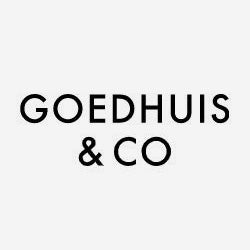
The report below is the first in an ongoing quarterly series: Informative, hopefully entertaining, in parts provocative, and giving some colour to the market. Who, you might ask, is the author?
Toby Herbertson joined Goedhuis & Company in Last month. The preceding eights year were spent at Liv-ex as part of the sales team, looking after a diverse portfolio of trade clients, prior to that a stint at Fine & Rare Wines inducted him into the world of fine wine.
“¢ January to June – 6 months of discontent
“¢ Return to the norm – Prices, in some cases, at levels last seen 5 years ago
“¢ Opportunity knocks?
Lack of New Year Cheer
The first six months of the year have proved an arduous time for merchants and collectors alike. January, usually fuelled by the optimism of a fresh start after holiday excess, failed to lift the mood and this set the tone for following months. 2014, it would seem, would carry on where 2013 left off: a lack of demand and a surfeit of vendors adding pressure to an already strained market; and so it was.

(The Liv-ex Fine Wine 100: the industry’s leading benchmark, representing the price movement of 100 of the most sought-after fine wines for which there is a strong secondary market. The majority of the index consists of Bordeaux although wines from Burgundy, the Rhone, Champagne and Italy are also included.)
The saving grace would be a successful en primeur campaign. It proved not to be the case. If the brace of 2009 and 2010 were notable for their extraordinary quality, they also garnered attention for their unprecedented release prices. The chateaux, mindful of the remarkable prices being achieved in the secondary market, sought to retain profit. That these lofty prices were a result of insatiable and, as it proved, unsustainable demand from China was irrelevant. Whilst merchants held their breath, for the large part, these price increases were absorbed. This gave succour to the chateaux, so much so that the ensuing vintages 2011, “˜12 and ’13 were released at prices that increasingly caused consternation amongst buyers. Put simply en primeur was being strangled by the chateaux.
So the usual fillip to the market was absent in April, May and June. Early summer, when one expects to be allocating the latest offering from the first growths, was unexpectedly freed up for rosé sales.
Return to the norm
However, whilst the malaise of the market has been much discussed, there are some positives to be found. It is now three years since the market peaked, the heady days of Lafite Rothschild achieving vertiginous prices in Hong Kong auction rooms a fading memory and, although decreasing prices are not a cause for celebration, a return to the “˜norm’ is.

A cursory check of the market, and if we take the first growths as a proxy, reveals that drinking vintages (i.e. those not burdened with the increasingly irrelevant title of “˜vintage of the century’) are available for around £200 per bottle in bond. Interestingly some vintages, and Haut Brion springs to mind, are only a touch above their original release prices; at some point the interesting becomes compelling. Exactly when is a good question, though equally important is “˜where’.
With the Asian market firmly established but diverging as interests develop and the US still firmly rooted on the side lines, though there are some murmurs of engagement, it is from the traditional European market that buyers will emerge. The recent disenchantment with Bordeaux has resulted in skipped vintages and the occasional gap in cellars, gaps that can now be filled from the market. Bordeaux, on occasion, does smell of roses.
“ƒ
Beyond the Gironde
It is easy to think that the secondary market revolves exclusively around Bordeaux. Indeed the chateaux devote considerable resources to ensure minds do not stray outside the environs of the Gironde, but this is remiss. If Bordeaux has suffered of late so other regions have prospered.
Burgundy, Champagne and Italy have all benefited in interest from weary claret buyers, the former in particular achieving some remarkable results at auction. Indeed if you are considering selling Burgundy, now is an opportune time. Champagne, particularly the 2002 vintage, and Italy, augmented by a near universally superb 2010 vintage are, perhaps, worth further consideration.

The contrarian view, of course, dictates that Bordeaux now presents an opportunity. Whilst it may be premature to ring the bell, there is only so much bad news to endure. As vintages of the calibre of 1996, 2000 and 2005 have lost much of the puff of the Asian led bull market, we shall be highlighting some potential opportunities in the coming months.
Otherwise the summer months are a fallow time, merchants’ and clients’ thoughts turn to less strenuous matters: early bought rosé being one of them. So, invariably, it is the fourth quarter that holds the fate of the year. Hence if you are looking to sell it may be beneficial to wait and see what autumn brings.

